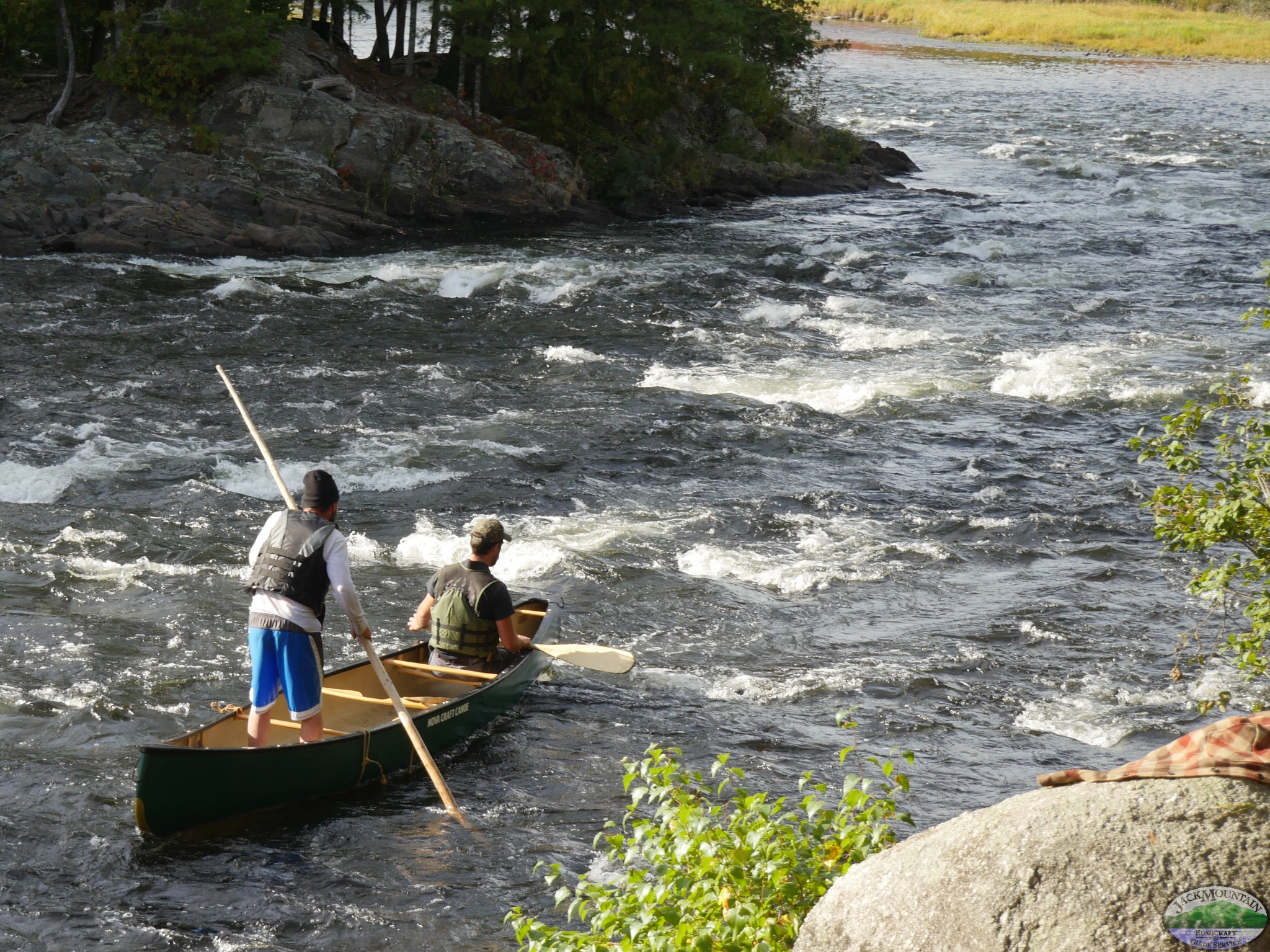Poling a canoe is a difficult thing to learn. It’s even more difficult to teach. We have a series of exercises and situations we run people through, but it takes some time before the lessons sink in and people start to get it. When it finally happens, the “a-ha” moment is visible. They stop fighting the current and start working with it. When done well, poling is an intricate dance between the canoe and the current. Yesterday, people around here started to dance.
In the warm afternoon we poled downstream, then up Squapan stream to the shallow rips just below the bridge. My job as the instructor was to locate, in this exact water level, the right water depth and current speed to help them learn. Their job was to perfect the poling strokes so as to perform the required maneuvers. Both jobs were successfully completed.
I break paddling and poling down into strokes and maneuvers. Strokes are how the paddle or pole interact with the water. Maneuvers are how you combine strokes and body position in order to have the boat do something specific. An example would be a reverse J paddling stroke. You paddle a reverse J, along with occasional draws and prys, to perform a downstream ferry maneuver, which allows the canoe to travel across the current but not move downstream. You learn the strokes first, then combine them into maneuvers.
Being able to use specific strokes in order to perform maneuvers are a prerequisite to safe river travel. Yesterday everyone was able to perform the basic set of maneuvers.
After being there while people struggle for days, it’s incredibly rewarding to be there when they get it and it finally clicks. The frowns are replaced with smiles and the growing confidence is palpable. To be there for the “a-ha” moment, to help people grow and develop confidence, is why I teach.








